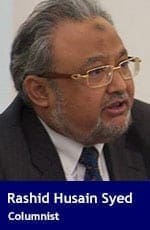Riyadh is no longer willing to toe Washington’s line and its interests now reign supreme
 OPEC+’s announcement last week that it will curtail its output by an additional 1.6 million barrels per day (bpd) took the world by surprise. Few had expected it, with most of the view that the OPEC+ would roll over its existing output ceiling.
OPEC+’s announcement last week that it will curtail its output by an additional 1.6 million barrels per day (bpd) took the world by surprise. Few had expected it, with most of the view that the OPEC+ would roll over its existing output ceiling.
OPEC+ stalwarts, including Prince Abdulaziz bin Salman, the Saudi oil minister and the de facto leader of the exporters’ group, had also been indicating the same.
Yet the organization had something else up its sleeves. To tighten the markets, it opted to curtail its output further. The additional pledges bring the total volume of cuts by OPEC+, which groups the Organization of the Petroleum Exporting Countries with Russia and other allies, to 3.66 million bpd according to Reuters calculations, equal to 3.7 per cent of global demand.
This move was significant, given the recent strengthening of the oil markets. Markets felt the jolt. At the gas station next to me in Burlington, Ont., prices have crossed the $1.55/litre mark, despite the fact the additional cuts are to become effective only next month.
Physically speaking, nothing much has changed. This was a simple case of market psychology taking the cue and prices erupting.
What made Saudi Arabia and its allies take this decision? While answers are not easy to find, one needs to underline that OPEC analysts keep a very close eye on market developments. Considering their interests, the decisions are generally pragmatic.
There now seems to be a growing feeling within OPEC, and even outside, that the world is heading into a recession, which could mean demand destruction. High inventory could cause price volatility. Hence, OPEC+ felt it needed to keep a tight leash on output and keep the markets ‘stabilized’.
Oil prices last month fell towards $70 a barrel, the lowest in 15 months, on concern that a global banking crisis would hit demand. As part of the new output arrangement, Saudi Arabia announced it would voluntarily cut its output by 500,000 bpd. While making the announcement, the Saudi energy ministry said the kingdom’s reduction was a precautionary measure aimed at supporting the stability of the oil market.
OPEC thus had some solid grounds for the decision. Demand indicators had begun flashing warning signs. “OPEC is taking pre-emptive steps in case of any possible demand reduction,” Reuters quoted Amrita Sen, founder and director of Energy Aspects, as saying.
“While OPEC+ cuts on the surface are generally seen as bullish, it does also raise concerns over the demand outlook,” Warren Patterson, head of commodities strategy at ING, told Bloomberg. “If OPEC+ were confident in a strong demand outlook this year, would they really feel the need to cut supply?”
Recent moves in global fuel markets also underscore the demand skepticism. While oil prices rallied, moves for refined products were less pronounced, shrinking margins for refiners across Europe and the U.S. In Asia, prices of diesel, a key refinery product, are signalling heightened slowdown concerns as time spreads shrink to their lowest since November, Bloomberg added.
And though U.S. inventories have been declining, global inventories are still high. In the first quarter, commercial oil stockpiles held in OECD countries were sitting about eight per cent above last year’s levels, according to estimates from the U.S. Energy Information Administration. That’s a fairly sizeable buffer and a sign of the weakness in consumption that’s plagued the market in the past few months. “You do need to chew through that overhang first before we can see the upside,” said Gallarati of Energy Aspects.
And although Russia has announced that its outflow decreased by 700,000 bpd last month, crude shipments from Russia’s ports hit a new high in the final week of March, topping four million bpd. That’s 45 per cent higher than the average seen in the eight weeks before Moscow’s troops invaded Ukraine and has been boosted by the diversion since January of about 500,000 bpd delivered by pipeline directly to Poland and Germany, a Bloomberg report said.
The OPEC+ decision was also seen as a political message to Washington. Riyadh is no longer willing to toe the line, and its interests reign supreme. Despite pressure from the U.S., there are no signs of any divorce between Moscow and Riyadh on the ‘crude’ issue. They continue to coordinate their moves. Higher prices would not only help Saudi Arabia but would also help Russia earn more from its crude sales. That is not in sync with Western demands.
Further, the U.S. decision not to refill its depleted strategic petroleum reserves, which would have helped the markets, forced the Saudis and its allies to immediately strengthen the markets by cutting output.
It was a tit-for-tat business too.
Toronto-based Rashid Husain Syed is a respected energy and political analyst. The Middle East is his area of focus. As well as writing for major local and global newspapers, Rashid is also a regular speaker at major international conferences. He has provided his perspective on global energy issues to the Department of Energy in Washington and the International Energy Agency in Paris.
For interview requests, click here.
The opinions expressed by our columnists and contributors are theirs alone and do not inherently or expressly reflect the views of our publication.
© Troy Media
Troy Media is an editorial content provider to media outlets and its own hosted community news outlets across Canada.


